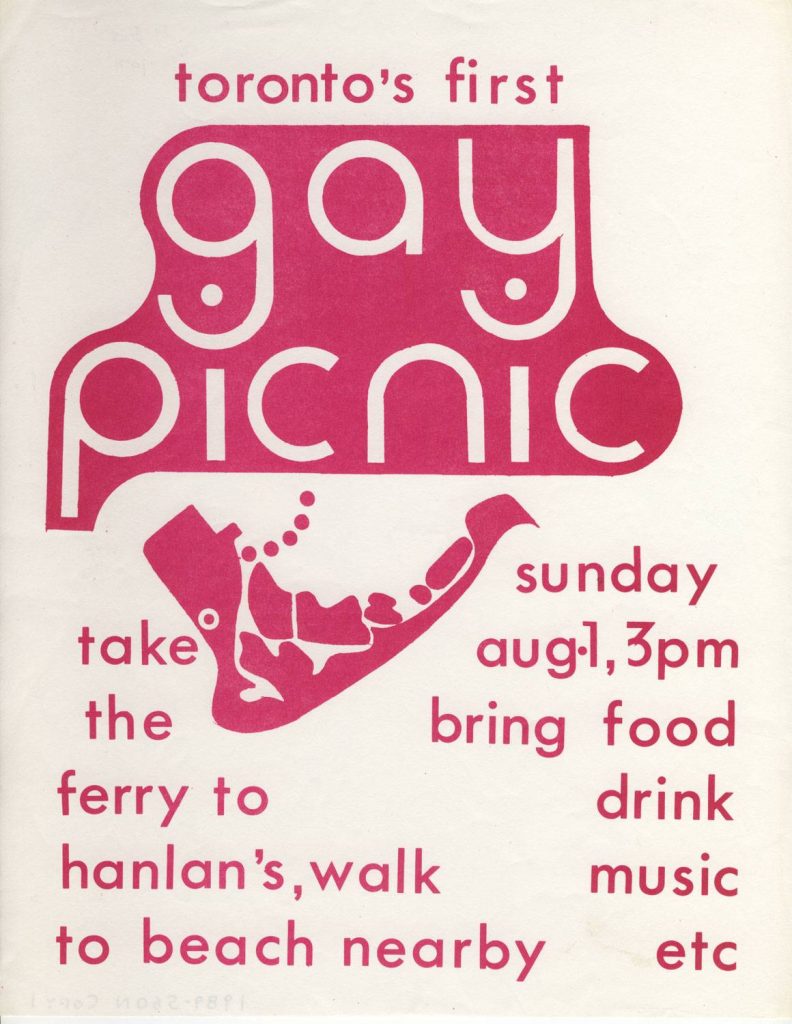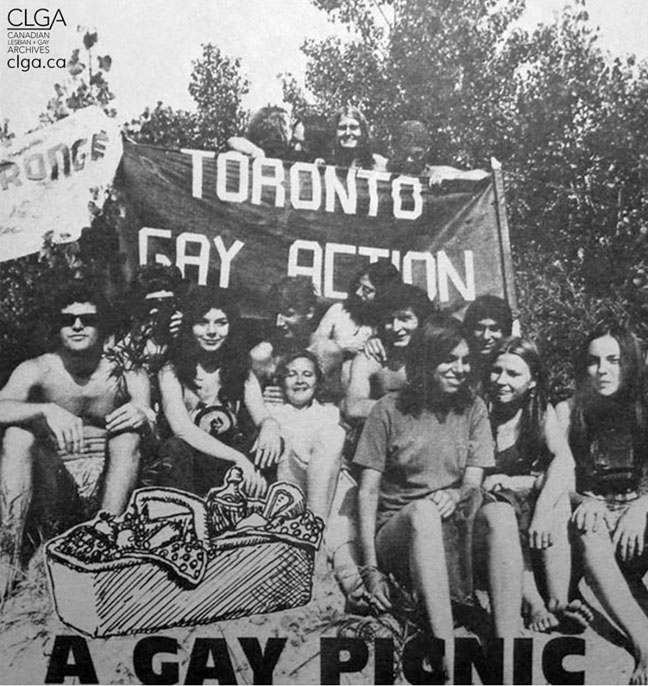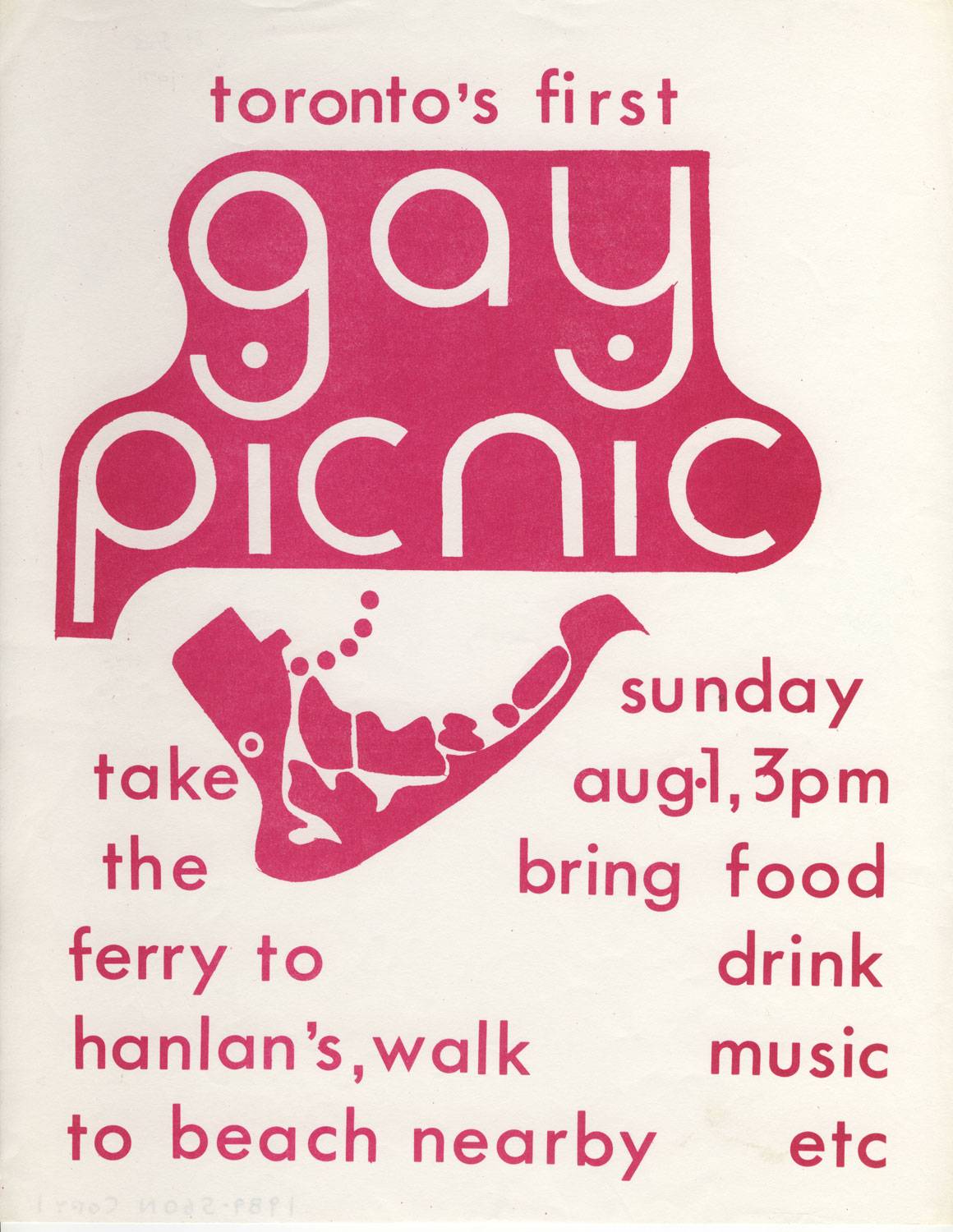Where were the seeds of our Pride Month planted? How did it start?
In June 2017, Pride Toronto held its second annual “Pride Month.” More than 2.1 million people attended programming that spanned 25 days. Today, there are 45 sponsors listed on Pride Toronto’s Pride 2018 page, and it seems like the third annual instalment of Pride month in Toronto will be bigger than ever. Pride however has its roots, as we all know, in much humbler beginnings. To celebrate Pride month, we wanted to take a look at the very first Pride in Toronto: when was it? What was it? The date of the first “Official Pride” will continue to be debated among academics, scholars and activists. Regardless of this debate, the 1970s ground swell of grassroots activism, individual sacrifice, risk and the innovative community building of Toronto’s gay community must be acknowledged and heralded as the beginning of the national queer movement that is responsible for the rights we now cherish. The ArQuives has a full collection of archival artifacts, vertical files, video and photography documenting the events and activism that infused this movement and the early iterations of Pride. Jearld Moldenhauer, who spoke to queerstory.ca about CHAT’s involvement, detailed the first gay pride week held in 1972. In the former synagogue that housed CHAT at the time, Pride had “panel discussions, there was an art exhibit, there was enough space to have dances – everything.” But it wasn’t all fun and games. As the group of approximately 300 people marched up University Avenue, defying the city with their unsanctioned parade, Moldenhauer noted the “unmarked police cars, with cameras, taking pictures…”. George Hislop, cofounder of CHAT, and the first openly gay city council candidate, joined the younger activist for the inaugural march in 1972. The first ever Pride picnic in Toronto was held on August 1, 1971, at Hanlan’s Point. It was organized by the Community Homophile Association of Toronto (CHAT) and Toronto Gay Action. This was followed by a Pride week held in the following year, featuring another picnic but also a small march in the city. An advertisement archived by The ArQuives encourages folks to meet at Ward Island for the picnic, and to bring “your own lunch, frisbees, footballs or whatever else turns you on.”

white poster for picnic hosted by CHAT in 1971, with pink text “Toronto’s first Gay Picnic”

a photograph from the picnic in 1971, with a group of individuals sitting at Hanlan’s point, holding a “Toronto Gay Action” poster

a photograph from the 1972 march on University Avenue in Toronto, Ontario, with individuals holding signs and speaking into loudspeakers. Photograph taken by Jearld Moldenhauer, http://www.jearldmoldenhauer.com

a photograph from the 1981 Pride March. Image by Kyle Rae.

a photograph from the 1981 Pride March. Image by Kyle Rae.
We’ve Just Had the Best Pride Ever – It’s Time To Join the Archives To Keep Our Stories Alive!
Become a member of the largest, independent LGBTQ2+ Archives in the world. For as little as $15 you can become a member and know that you are supporting our communities, our past and our future. Donate Now Our mission is to collect, preserve, and share the histories of LGBTQ2+ people in Canada. We celebrate the diversity and richness of our shared history through archiving, exhibitions, and research – and we can’t do it alone. Our supporting members are instrumental in keeping our stories alive through their generous donations of time and financial gifts. If you are not a member yet, consider joining us at The ArQuives so we can continue to preserve our past for future LGBTQ2+ generations.

